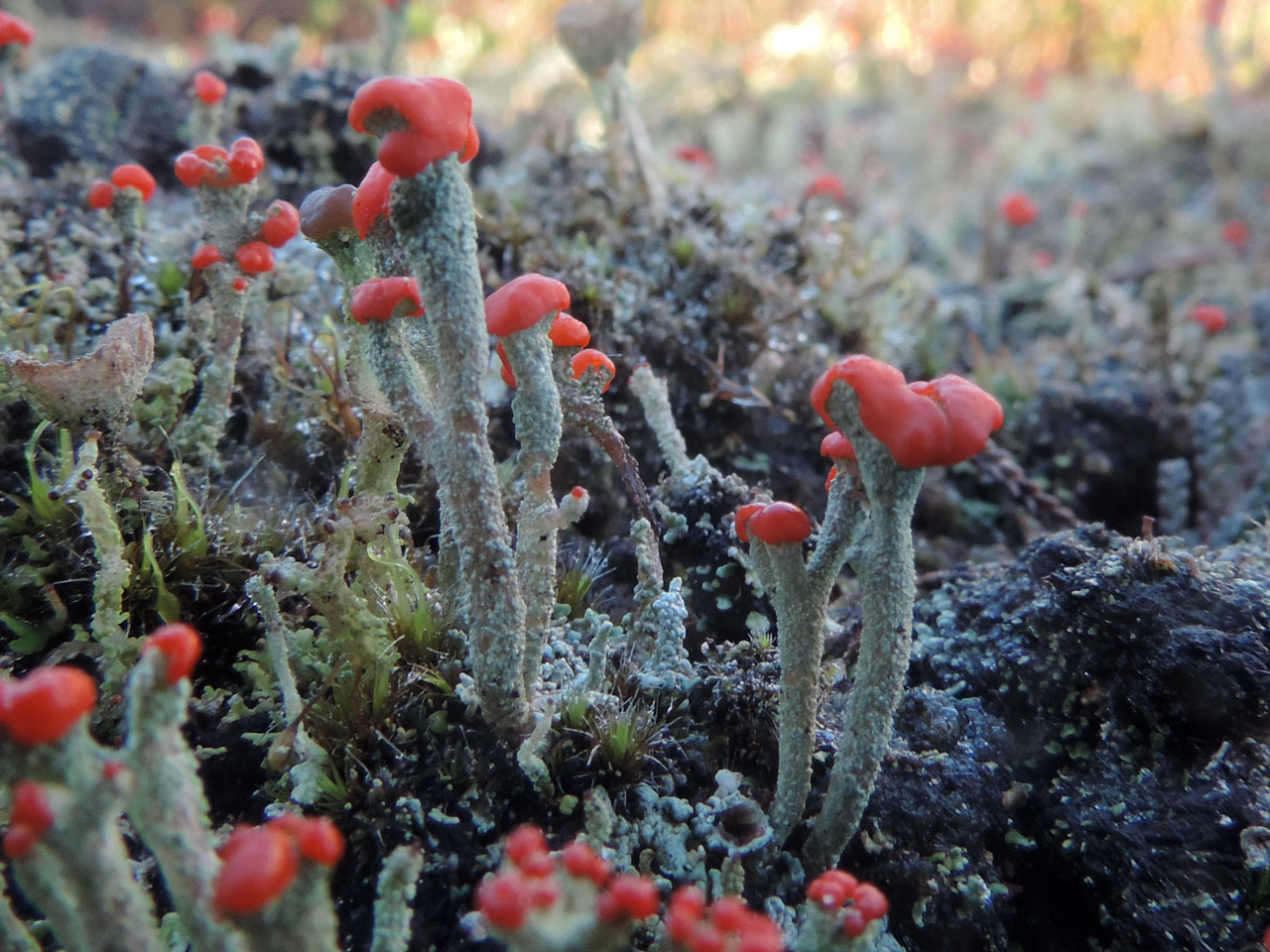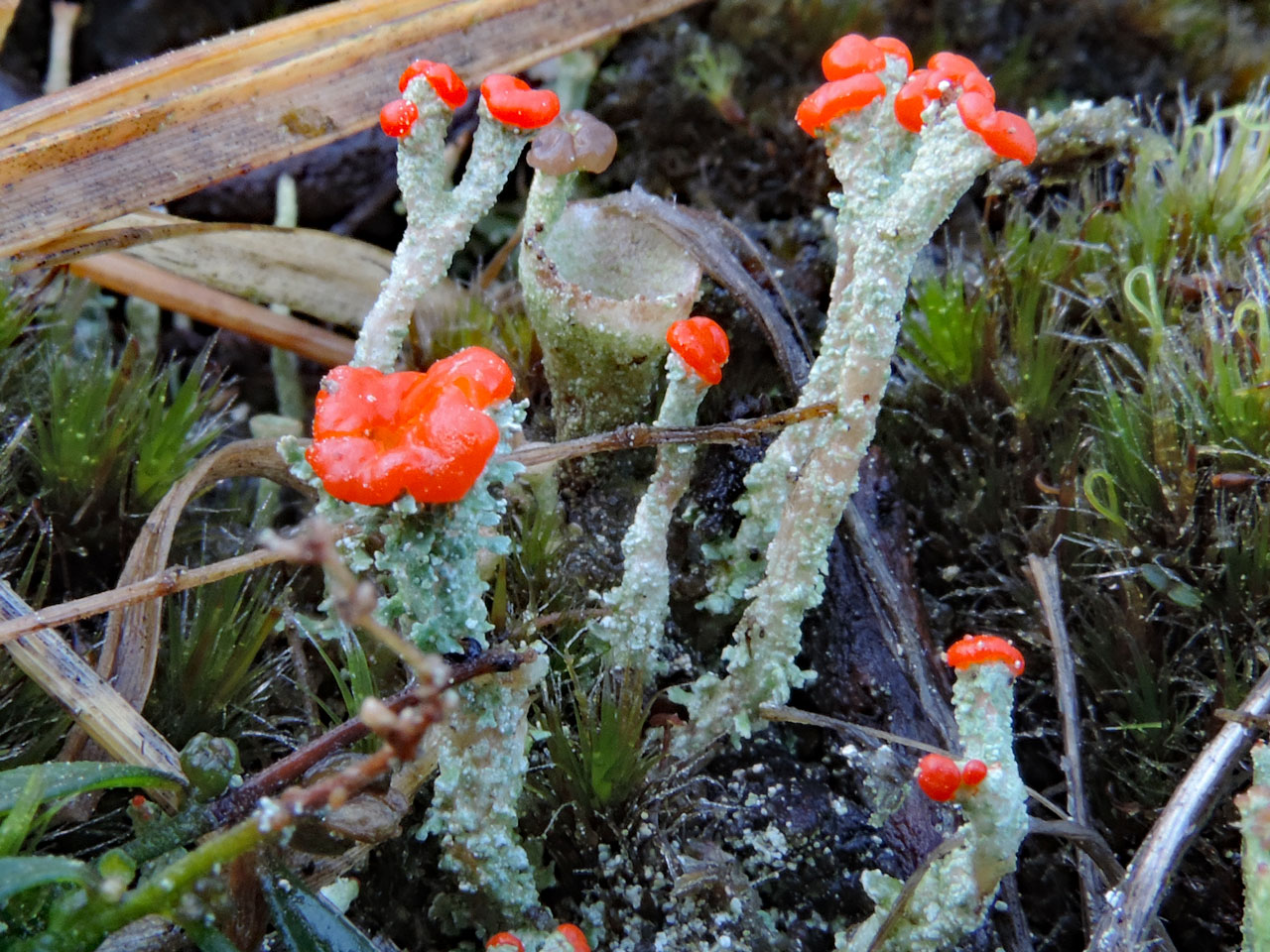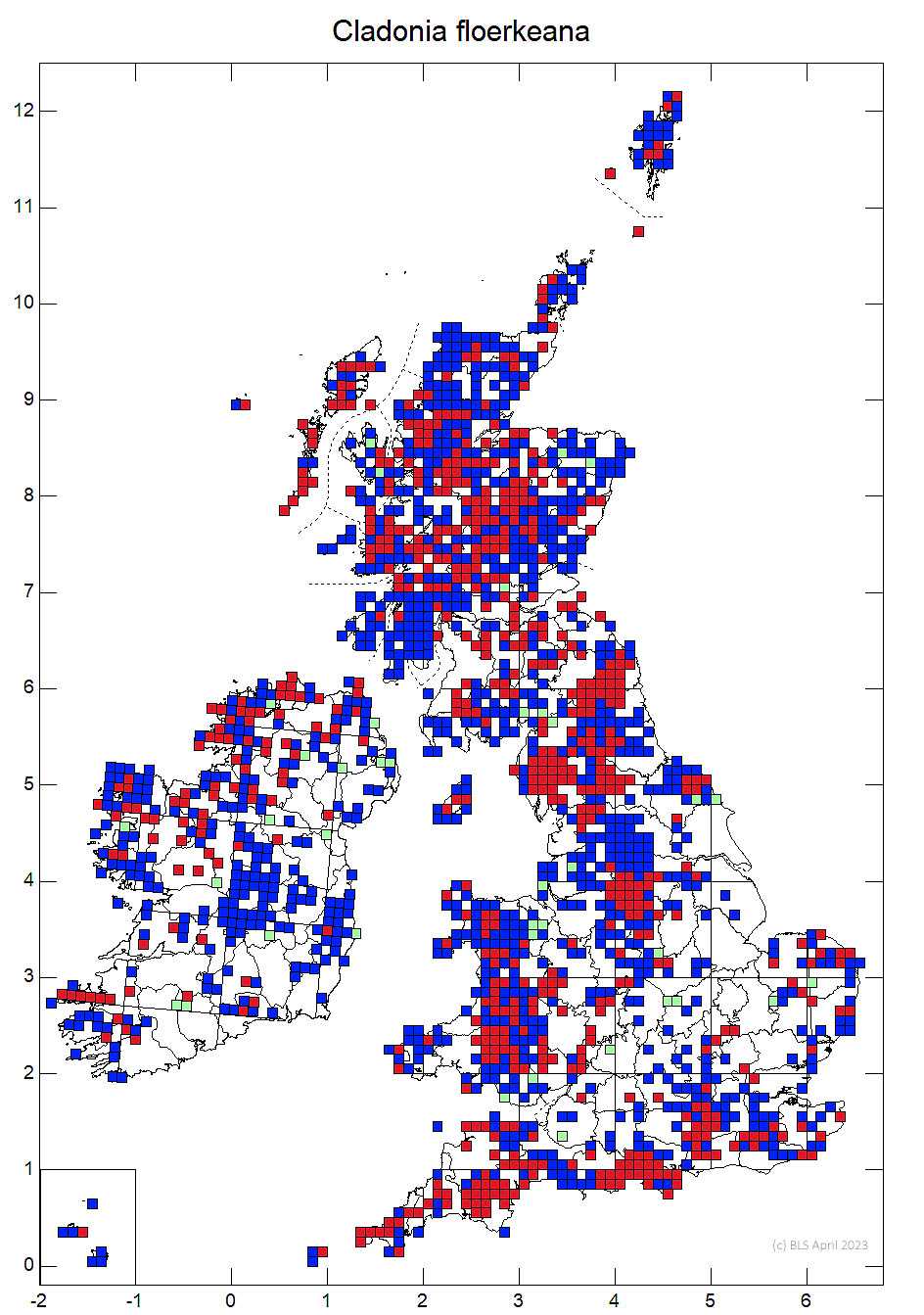Devils Matchsticks is a widespread and distinctive species of acid substrates, especially strongly acidic humus in heaths and moors, but also on lignum. Distinguished by the combination of red apothecia on coarsely granular podetia without cups and normally K–.
Podetia to 2 cm tall but often shorter, pale to dark grey, ± tinged brown in exposed sites, without cups, unbranched or occasionally sparingly branched near the apices, ± entirely corticate or becoming partially decorticate especially towards the apices, rarely granular-sorediate in patches but very frequently with coarse granules, or podetia becoming ± entirely densely squamulose. Basal squamules small, persistent, inconspicuous, often tinged orange toward the base of the lower surface. Apothecia commonly abundant; hymenium and pycnidia red, terminal on podetia, single or clustered. Thallus C–, K+ yellow (rare) or K– (orange pigment reacts K+ purple), KC–, Pd–, UV± blue (barbatic acid and, rarely, thamnolic acid).
Closely related to Cladonia macilenta. Usually an abundantly fertile, and then conspicuous species, but the podetia are variable and may be almost entirely decorticate except for a few scattered corticate granules, or, conversely, densely squamulose throughout. C. macilenta, which may occur in similar habitats, is always partly to wholly finely sorediate and usually K+ yellow. C. polydactyla podetia lacking cups are coarsely sorediate and also K+ yellow. The closely related, but very rare, C. alpina has taller podetia, farinose to subgranular soredia and contains porphyrilic acid.
On strongly acid substrates in heathland and moorland, also on mossy scree, well-rotted wood, fence posts and tree stumps in open situations.

Common throughout Britain and Ireland, expect for the most productive lowlands.
Sanderson, N. A. (2017) The New Forest Heathland Lichen Survey 2011 – 2015. A report by Botanical Survey & Assessment to Natural England, Forest Enterprise & The National Trust. Link
Text by Neil A Sanderson based on Pino-Bodas et al (2012)


